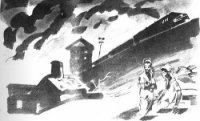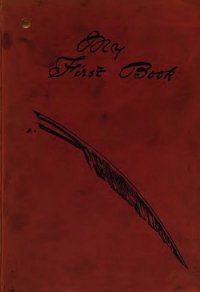Operation Nemesis: The Assassination Plot that Avenged the Armenian Genocide - Bogosian Eric (мир книг .txt) 📗
CHAPTER THREE Blood Flows
Genocide, after all, is an exercise in community-building.
—Philip Gourevitch
Many of the best-known histories of World War I have focused on the trench warfare between the Triple Entente (the United Kingdom, France, and Russia) and Germany. World War I was all about aerial dogfights and poison gas, “Tommys” and “doughboys.” This was a European war, wasn’t it? The events depicted in films like Gallipoli and Lawrence of Arabia have crept into our consciousness, but most people would probably be hard-pressed to explain how they fit into the big picture of the “Great War.”
The southern flank of World War I would hold long-term consequences for the Western world because the prize was nothing less than control of the earth’s greatest oil deposits, regions that to this day represent over half the world’s known oil reserves. It was on this front that the Ottoman Empire finally fell to pieces, losing its Arabian territories in the process. And it was under the cloak of this war between the Ottoman Empire and the Allies that the Armenian Genocide proceeded with little detection.
The Ottoman Empire, particularly its war minister, Enver Pasha, admired Germany’s might, ambition, and efficiency, but the two nations were not natural allies. In fact, though Kaiser Wilhelm II had professed deep affection for Turkey and Islam, Germany’s interest in the Ottoman Empire was above all strategic. Likewise, the Young Turk government could just as easily have found an ally in Great Britain and historically had a genuine affinity for France. The real enemy for both Germany and the Ottoman Empire was Russia, which shared a long, challenging border with both states. For at least a century, Russia had its sights set on controlling the Bosphorus, and that meant Constantinople, which the Russians fondly called “Tsargrad.”
Many historians refer to the complicated jockeying for control of this critical intersection of Europe and Asia as “the Great Game.” If Russia (or Germany) could gain control of Asia Minor, it would be well positioned to seize the Arab lands, specifically the Levant, the Hejaz (western Saudi Arabia), and Mesopotamia (today’s Iraq). As far as Great Britain was concerned, control of Arab lands meant control of the Suez Canal and, by extension, access to Persia and India. For this reason, the central territory of the Ottoman Empire, what we now call Turkey, stood as a massive buffer between the Great Powers. But Germany was unhappy with the status quo for various reasons, lack of oil resources being only one of them. Germany viewed the Ottoman lands, particularly Asia Minor, as fertile ground for development, what would later be called Lebensraum, or “living space,” a concept that loomed in the German consciousness long before the Nazi era. At the onset of World War I, the Baghdad Railroad, financed by Deutsche Bank, was slowly but surely penetrating the Turkish hinterlands.
By the summer of 1914, the Young Turk government was exhausted by two wars in the Balkans. Large chunks of Ottoman territory in Europe had broken free. War loomed, and it was easy to see that Russian troops would soon flood into the eastern (Armenian) vilayets, while British forces would be testing the Aegean littoral. The Young Turks tried to stave off a clear decision about joining the war for as long as possible, but by the end of July, Winston Churchill had seized Turkish vessels being built in English shipyards, clearly setting the stage for conflict between the two powers. Secret negotiations led to an alliance between Germany and the Ottoman Empire, and when Ottoman (formerly German) warships fired on Russian ports on the Black Sea, the Turks had finally entered the war.1
Six months into the fighting, the Ottomans suffered major setbacks as Russian and Turkish troops fought it out in eastern Turkey. Enver Pasha, in an ill-conceived move, had pushed into Russian Caucasian territory in December, losing more than seventy thousand men in the freezing mountainous heights near Sarikamish. At the other end of Asia Minor, British warships massed in the Mediterranean in preparation for a thrust past Gallipoli and the Dardanelles, through the Sea of Marmara, and into the imperial city. Making provision for the inevitable, the CUP leaders made ready to abandon their home base, planning to pull back from all fronts and consolidate their forces in central Anatolia.
But the collapse of the western (Constantinople) front never materialized. Skittish and under stress, Admiral Sackville Carden could not find a way to move the British fleet past the heavily mined Dardanelles. Over the ensuing months, the Ottoman army held the line at Gallipoli as British, Australian, and New Zealander troops suffered thousands of deaths and tens of thousands of casualties. Both the threat of invasion and the reversal that followed spelled doom for the Armenians, who were viewed by the Young Turk leaders Talat Pasha and Enver Pasha as a potential “fifth column.”
To be sure, committed Armenian fedayeen fighters in the east had either stepped up their sabotage against the regime by cutting telegraph wires, working as spies for the Russians, or moving illicit arms. Some drifted across the border and joined the Russian troops as a vanguard of the invading army, working as guides for the Russians through the foreign terrain. The veteran Armenian leaders of these hardened Tashnag and Hnchag troops gathered up and took command of the volunteers migrating toward the war front. The Ottoman parliamentarian and former revolutionary Armen Garo, to the consternation of many Armenians, joined the Russian forces, going so far as to have his picture taken in full Russian battle regalia.2 But these Armenian fighters, who numbered a few thousand, did not accurately reflect the attitude of the Armenian population of Turkey, at that time estimated at about two million souls.
During the tense weeks prior to the onset of “the war to end all wars,” the Ottoman army was desperately in need of men. After two Balkan wars that had dragged on for years, young Ottomans harbored few illusions about what a soldier’s life held in store. Before the Balkan wars, a series of conflicts with Russia had decimated generation after generation of peasants. The people had nothing to show for their sacrifice but casualties, famine, and rampant disease. The Ottoman army, unlike the orderly and smartly uniformed European military, was badly outfitted and poorly trained. Conscription was seen as nothing more than a delayed death sentence. Army life meant backbreaking work, near-starvation, and slow death by flea-borne typhus or a fast death by bullet or bayonet. The role of the Turkish soldier was best summed up in General Mustapha Kemal’s famous command at Gallipoli: “I’m not ordering you to fight, I’m ordering you to die.”
And now, because of the political reforms, even Christians were included in the draft rolls. Young Armenian men, as members of the Christian millet, had traditionally paid the bedel tax and were excluded from service. Now, since the restoration of the constitution, they were no longer exempt and were obliged to fight. The first Armenian conscripts were full-fledged soldiers, and as such, armed with rifles. There were even Armenian officers serving in the ranks.3 But soon after the war officially began, in February 1915, Enver ordered that the Armenians’ weapons be taken from them. Instead of serving on the front, Christian soldiers were collected into “labor battalions” (inshaat taburu). These battalions were little more than slave units in which the soldiers were worked to death like pack animals. The men were exploited until they died, and if they did not die, they were marched to remote areas and murdered outright.




